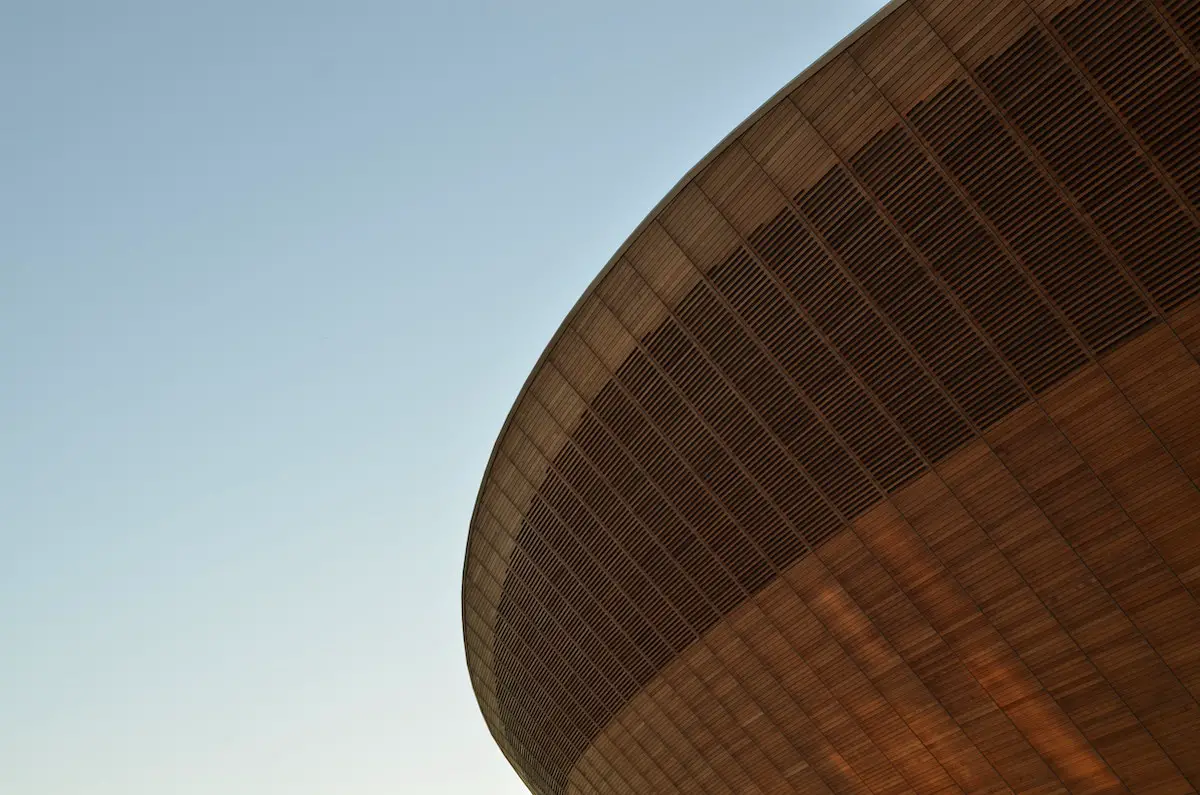Richard Wentworth and Tom Emerson spoke at Futures Fair 10 last week, exploring the importance of recognising your culture’s past when thinking about evolutions in modern design. They discussed how the cedar-burning traditions of Japanese architecture are continuing to be used by designers when creating modern, urban architecture, forming visual connections with what came before while also looking to the future.
Sometimes, the core of an idea is enough to inspire a new vision. It was that approach that orchardstudio followed when creating the elastic chair. Made from just two materials – sterling board and elastic bands – the elastic chair strips back the basic functionality of a chair, introducing materials which satisfy the functional demands made of a chair. The mass of elastic bands support weight and provide comfort, with the basic frame securing the structure. Transporting the product has also been well considered. In flat-pack form, the chair takes up little more space than the size of its two side sections placed on top of each other, introducing bulk-transport possibilities with a decreased carbon footprint.
Many everyday products are including recycled materials in their design, with some, like the elastic chair, going one step further, being made from fully recycled materials. But when reuse isn’t an option, recycling is key. When Victoria Soudavnaya and Stefan Strömbäck began designing Sortify just over a year ago, they wanted to create a product that could easily replace every city rubbish bin and make on-street recycling easier. Most cities are well equipped for waste disposal, with bins on every street, but finding a recycling point for your newspaper or plastic bottle is harder. Once again, the design is very familiar with what came before, essentially being an ordinary bin split into four sections, five cities in Sweden have committed to rolling-out the product.
Sometimes, a complete rethink is needed. Also at Futures Fair 10, Julian Hakes asked ‘when was the last time the flip-flop was reinvented?’ Not a rhetorical question, he explained how, after exploring weight transference across the foot and much rapid-prototyping, he created a wrap-around flip flop with a sole only on the heel and ball of the foot. His design has received global press coverage, fuelled both by its innovative design and his refusal to allow anyone to be photographed wearing it. Hakes called his piece ‘a reaction against a style applied to a foot, [and] more about a process of support and materiality.’ Comments online included ‘somewhere, eagerly, a dog poop awaits’.
There are times when a complete rethink has no visual impact at all. In Copenhagen, traffic lights are always green for cyclists. Well, if you cycle at a consistent 20km per hour the lights are timed so you won’t meet a red, creating a smooth speedy journey into the city centre for the 35,000 cyclists that use this particular stretch every day. Copenhagen is one of the world’s most bicycle friendly cities, and – unsurprisingly – has one of the highest rates of bicycle use. This design tweak used information and existing infrastructure to prioritise sustainable travel, with no change to the physical built environment.
Another Futures Fair 10 speaker, Gabby Shawcross is an architect with a background in set design, who also worked with urban light innovations, albeit on the total other end of the spectrum to Copenhagen. Tasked to create an untraditional, interactive lobby space, Shawcross created a wall of light-containing cameras that respond to the movement of the body and colours in the environment. A visitor’s movements within the lobby would affect the motions of the lights, and the colours of their clothing would even begin to seep into the displays. Shawcross also designed a touring pavilion which displays a panoramic time-based images with movements based on the interactions of those nearby. This particular project took on an even larger audience, being displayed in real-time on the O2 website.
Discussion at the event suggested that the broadening of architectural practice was a good thing, with responsive design like Shawcross’s work being called ‘the future of architecture’, and the importance of different design approaches emphasised as essential for modern cities to thrive.
Photo: Kae Ng


